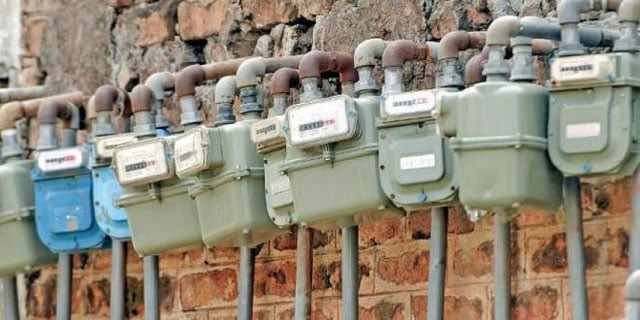Gas utilities to collect additional fixed charges
Such charges will apply to ‘non-protected consumers’ with effect from Jan 2023

Sui Northern Gas Pipelines Limited (SNGPL) and Sui Southern Gas Company Limited (SSGC) have announced that they will collect additional fixed charges of Rs460 per month from “non-protected” residential consumers with retrospective effect beginning January 1, 2023.
The two state-owned gas utilities will also apply revised tariffs to the bills issued in April covering gas consumption in March, in line with the government’s plan to collect Rs310 billion from consumers over six months from January to June 2023.
As the new tariff has come into effect from January 1, 2023, the utilities will recover arrears (the differential amount) for January and February in the bills of March, April and May.
The amount will reflect in the bills as “adjustment” and “previous balance”.
Earlier, the government increased gas prices for residential consumers up to 124% with effect from January 2023.
In a statement issued on Thursday, SSGC said that it would collect fixed charges of Rs460 per month from “non-protected consumers”.
The consumers who utilised more than 90 cubic metres of gas (on an average) in winter months from November 2022 to February 2023 are categorised as non-protected customers.
However, those who used up to 90 cubic metres in winter are “protected customers”, who will pay additional fixed charges of Rs10 per month.
Fixed charges will be collected by both the gas utilities, according to a notification released by the Oil and Gas Regulatory Authority (Ogra) in mid-February 2023.
SSGC, which supplies gas to consumers in Sindh and Balochistan, said that the new fixed charges would be collected “against piped natural gas service facility at the doorsteps.” “Protected customers will be treated as non-protected (ones) on the basis of subsequent month’s consumption with more than 90 cubic metres as a barometer for that particular month only,” it added.
The government approved the revised tariff in February 2023 to enable the public gas utilities overcome the estimated shortfall in their targeted sales revenue.
They are facing the revenue shortfall due to high line leakages, theft (of up to 17%) and drop in production of natural gas at domestic fields.
Latest weekly data suggests gas production has dropped by 3.5% to 3,325 million cubic feet per day (mmcfd) in the week ended April 23, 2023.
“The decline in production is due to the annual turnaround (ATA) at Mirpurkhas and Khipro fields,” said research house Arif Habib Limited.
Local production stood above 4,000 mmcfd about a few years ago but fast depletion of reserves and no new big discoveries over the past two decades have continued to impact sales of utilities.
Demand for gas is estimated at 6,500-7,000 mmcfd with shortfall being managed through prolonged outages and some imports.
The government has increased the gas price by 16.6% to Rs350 per million British thermal units (mmBtu) for residential consumers utilising 100 cubic metres a month.
For consumers using 200 cubic metres, the tariff has gone up to Rs730 per mmBtu and for those using 300 cubic metres, the price has risen by 69% to Rs1,250 per mmBtu.
The tariff has increased by 99% to Rs2,200 per mmBtu for consumers using 400 cubic metres and it has surged by 124% to Rs3,277 per mmBtu for those domestic consumers who use more than 400 cubic metres a month.
















COMMENTS
Comments are moderated and generally will be posted if they are on-topic and not abusive.
For more information, please see our Comments FAQ